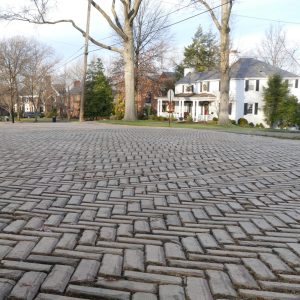Kirven Lawhon: A Hero’s Tale

Eight miles west of Mt. Lebanon, a tragedy occurred 104 years ago that made a hero out of a teenage boy.
I was jogging along the Panhandle Trail when I noticed a marker explaining events that unfolded on May 18, 1918, in the borough of Oakdale. At noon that day, a deafening explosion rocked a dynamite manufacturing plant near the heart of town. Subsequent blasts followed. Scores of workers inside perished, as did some volunteer rescuers.
One brave rescuer was a 16-year-old boy with the unusual name of Kirven Lawhon, who worked at the Aetna Chemical Company where the disaster took place. The Aetna Chemical Company manufactured munitions for the United States and allied countries during World War I and employed more than 450 workers.
Imagine running into a dynamite factory that’s on fire after a horrible explosion. That’s exactly what Kirven Lawhon did, hoping to help some of his co-workers inside.
After the tremendous blast, we will never know for sure what happened, but we do know that Kirven ran towards the flames and scorching heat and not away from the burning building. We know he sacrificed his life in a heroic attempt to save others.
He died the next day in Mercy Hospital from peritonitis after shrapnel pierced his stomach when he rushed into the inferno and was hit by a secondary explosion. A Western Union telegram addressed to his mother in his hometown of Brooksville, Florida, informed her of her son’s death on May 19, 1918.
We’ve all heard of the “fight or flight” instinct which is hard-wired into the human brain and produces adrenaline that energizes us to attack or retreat when threatened. Sometimes the higher brain function of cognition creates hesitation and makes cowards of us. Think of maxims like, “Look before you leap” or “He who hesitates is lost.”
Kirven didn’t hesitate. He didn’t flinch when he saw others in danger, but raced into the blistering heat of the building to save workers and friends. Ironically, Kirven had quit his job at the Aetna plant the day before the explosion and was among the many bystanders who witnessed the fire from the outside. He had planned to move to Akron, Ohio, to find a better job and was in his boarding house packing when he heard the loud boom from the factory. Before he died, he even told a nurse at the hospital that he tried to join the army to fight in World War I, but was rejected for being too young.
The year 1918 was fraught with tragedies of all kinds, not unlike today. Besides the devastating war, a global influenza pandemic claimed millions of lives. If war and disease weren’t enough, the community of Oakdale lost 193 people in the Aetna Chemical fire.

A modest rectangular plaque along the Panhandle Trail near a stone bridge at the confluence of two creeks, Thoms Run and Robinson Run, by Oakdale Station commemorates that sad day in May more than a century ago. Up the hill from the trail is the Oakdale Cemetery where many of those who lost their lives in the explosion now lie in quiet repose. A granite monument describes them as soldiers who died in the service of their country. Now they all rest in what Abraham Lincoln called “hallowed ground.”
The plaque contains a slightly fuzzy photograph of Kirven Lawhon—a slender, dark-haired boy—along with two others involved in the explosion. James Keenan was another rescuer who died and Marilyn Ashelman was a nurse who survived but lost part of her leg in her attempts to help.
Kirven had everything to live for but risked his young life in a courageous effort to save people. Thanks to that marker on the trail, the teen with the peculiar name is not an anonymous unsung hero. He exemplified the best of human compassion and unflinching heroism, and his story lives on to inspire us in these troubling times which echo the year 1918.
Click here to learn more about the Aetna Chemical Explosion.





